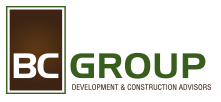What is the Latest with Green Building?
Green building is an innovative approach to creating buildings in a sustainable way that minimizes the environmental impact of construction and design. As technology and construction practices become more advanced, green building has become increasingly popular with builders, architects, and homeowners alike. In this blog post, we will discuss the latest trends in green building, as well as some of the benefits of going green.
Why spend the extra money? Recent research shows that green buildings can improve the health and productivity of those who live or work inside them. In some cases, green buildings can have the same benefits as spending time in nature, which can benefit people living in cold climates.
One trend related to green building that has been gaining traction in recent years is “building green from the ground up”. This means focusing on energy efficiency and sustainability from the very beginning of a project’s lifecycle. For example, one area of focus when it comes to green building is selecting materials that are made from renewable resources such as bamboo or recycled plastic. Additionally, utilizing materials such as low VOC paints and sealants can help reduce air pollution during the construction process and make for healthier living spaces long-term.
Another major trend in green building is the use of alternative energy sources such as solar panels and wind turbines. By relying on renewable energy sources instead of fossil fuels like coal, builders can significantly reduce their carbon footprint while also providing reduced energy needs for homes or businesses. Additionally, solar panels can generate reduced energy needs to heat homes during winter months or power appliances when needed.
More buildings are utilizing or being required to install eco (green) roofs, green walls, green interior decoration or even green infrastructure.
Covering the roof of an uninsulated building with plants reduces the amount of energy used in heating by up to five per cent in the winter, and the cooling energy by as much as 33 per cent in summer, which saves money. It also reduces daytime indoor temperature fluctuations in the absence of air conditioning.
Finally, many people are now turning towards green building solutions for water conservation purposes as well. Low-flow fixtures are becoming commonplace in modern homes, allowing homeowners to save upwards of 40% on their water bills each year by using less water than conventional fixtures require. Rainwater harvesting systems are another great option for those looking for ways to conserve water; these systems collect rainwater from rooftops and store it in tanks so it can be reused later for activities like gardening or washing cars without wasting valuable drinking water supplies.
These are just a few examples of how builders today are embracing green building practices in order to create more sustainable living spaces for their clients’ future generations—and there is no shortage of benefits associated with making these changes: reduced energy consumption translates into lower utility bills; increased air quality keeps occupants healthy; better indoor temperature control leads to increased comfort levels; improved stormwater management reduces flooding risks; longer lasting roofs mean fewer repairs over time; improved insulation means greater energy efficiency; stronger walls result in higher fire safety ratings; and lastly, tax credits often come along with meeting certain eco-friendly standards set by local municipalities.
Clearly there are plenty of reasons why going green makes sense when constructing new buildings—and many experts agree that this trend will continue to gain momentum even further into the 21st century as more people become aware of its benefits both financially, health and ecologically speaking.
